Best way to Clone a Plant: A Step-by-Step Guide to Creating New Plants from Cuttings
Table of Contents
I. Introduction to the Process: Best way to Clone a Plant
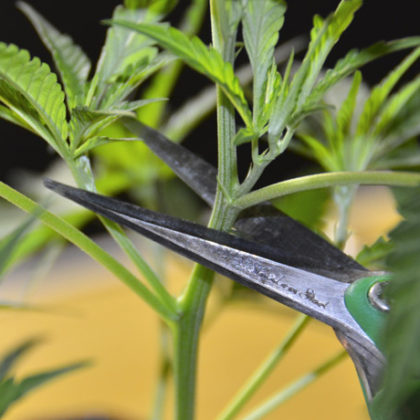
Plant cloning is a fascinating process that allows gardeners to propagate their favorite plants and achieve consistent results. Whether you are an experienced horticulturist or a beginner in the world of gardening, understanding the cloning process can open up new possibilities for cultivating a thriving garden.
Cloning involves creating genetic copies of plants through asexual reproduction. This means that the resulting clones will have the exact genetic makeup as the parent plant. This can be advantageous for gardeners who want to preserve specific traits, such as disease resistance, flower color, or fruit size. By avoiding the genetic variability that comes with sexual reproduction, cloning allows for greater control over the traits and characteristics of the new plants.
Gardening enthusiasts can benefit from the cloning process in various ways, including replicating plants with exceptional qualities, preserving rare or endangered species, and mass producing plants for commercial purposes. Through this article, we will explore the key steps involved in plant cloning, from selecting the right plant for cloning to transplanting the rooted clones. So, let’s dive into the fascinating world of plant cloning and unlock the potential of this remarkable technique for your gardening endeavors.
II. Selecting the Right Plant for Cloning: Factors to Consider
Selecting the right plant for cloning is a crucial step in ensuring successful propagation. There are several factors that should be considered when choosing the ideal plant for cloning. Firstly, it is important to select a mother plant that is healthy and free from any diseases or pests. This will help to ensure that the clones produced will also be healthy and have a better chance of survival.
Another factor to consider is the age of the mother plant. Plants that are too young may not have developed enough strong, healthy stems to produce viable clones. On the other hand, plants that are too old may have stems that are too woody and tough to root successfully. Finding the right balance in age is key to successful cloning.
Additionally, the size of the stems should also be taken into account. It is recommended to choose stems that are between 4 to 6 inches in length. Stems that are too short may not have enough nodes from where roots can develop, while stems that are too long may bend or break easily during the rooting process. Selecting stems of the appropriate size will increase the chances of successful rooting and establishment of the clones.
Furthermore, considering the condition of the stems is important. Stems that are damaged or diseased should be avoided as they are less likely to produce healthy clones. Look for stems that are straight, have healthy green foliage, and show no signs of stress or disease. This will help to ensure that the clones produced are strong, robust, and capable of thriving and growing into healthy plants.
Considering these factors when selecting the right plant for cloning will greatly increase the chances of successful propagation. By choosing a healthy and disease-free mother plant, taking into account the age, size, and condition of the stems, gardeners can maximize the success rate of their cloning efforts. This will ultimately lead to the production of strong, healthy clones that can be grown into thriving plants.
III. Gathering the Necessary Tools and Materials for Plant Cloning
Gathering the necessary tools and materials is an essential step in the process of plant cloning. By having everything prepared and readily available, you can ensure a smooth and efficient cloning process. Here are some of the key tools and materials you will need:
1. Scalpel or Razor Blade: A sharp and clean cutting tool is crucial for making precise stem cuttings. This will minimize damage to the mother plant and maximize the chances of successful cloning.
2. Sterile Cutting Surface: To prevent contamination and the spread of diseases, it is important to work on a clean and sterile surface. A cutting board or sterile tray can provide an ideal workspace for the cloning process.
3. Cloning Gel or Rooting Hormone: Using a cloning gel or rooting hormone can significantly improve the success rate of rooting. These substances contain growth hormones that stimulate root development and increase the chances of successful cloning.
4. Propagation Dome or Tray: Creating a humid and controlled environment is crucial for the survival and growth of the stem cuttings. A propagation dome or tray with a clear lid can help maintain the right moisture levels and provide the necessary insulation for optimal root development.
5. Sterilizing Solution: Before and after making each cut, it is essential to sterilize your cutting tool to minimize the risk of contamination. A sterilizing solution, such as a diluted bleach or hydrogen peroxide solution, can effectively disinfect the tools and prevent the spread of pathogens.
By gathering these tools and materials before starting the cloning process, you will be well-prepared and equipped to create healthy clones. With the right set of tools, you can increase the chances of successful cloning and ultimately achieve the desired results.

IV. Preparing the Mother Plant: Ensuring Optimal Health and Growth
Preparing the mother plant is a critical step in ensuring optimal health and growth for your clones. Before beginning the cloning process, it is important to select a healthy, disease-free mother plant that exhibits vigorous growth and desirable traits. This ensures that the clones will inherit these qualities and have a higher chance of thriving.
To prepare the mother plant, start by inspecting it thoroughly for any signs of pests, diseases, or nutrient deficiencies. Look for yellowing leaves, spots, or wilting, as these may indicate underlying health issues. If any problems are detected, they should be addressed before proceeding with cloning to prevent the transmission of diseases or weakened genetics to the clones.
In addition to addressing any health issues, it is crucial to provide the mother plant with optimal growing conditions. This includes placing it in a well-lit area where it can receive adequate sunlight or using artificial grow lights if necessary. Proper watering and fertilization should also be maintained to ensure the mother plant receives the necessary nutrients for healthy growth. Taking these steps will help to maximize the success of the cloning process and produce high-quality clones that will thrive in their new environment.
Here’s a table outlining some general steps and considerations for the Best way to Clone a Plant:
| Step | Description |
|---|---|
| Select Healthy Mother Plant | Choose a mature and healthy mother plant with desirable characteristics. This ensures the clones inherit optimal traits. |
| Gather Materials | Gather cloning materials, including sharp scissors or pruning shears, a cloning gel or powder, rooting cubes, and a suitable rooting medium. |
| Prepare Mother Plant | Ensure the mother plant is well-watered and healthy. Select a branch with new growth for cloning, preferably with several nodes for potential clones. |
| Take Cuttings | Use sharp, sterile scissors to take 4-6 inch cuttings from the selected branch. Cut just below a node at a 45-degree angle. Remove excess foliage from the lower part of the cutting. |
| Apply Rooting Hormone | Dip the cut end of each cutting into a rooting gel or powder. This promotes the development of roots and helps prevent diseases. |
| Insert Cuttings into Medium | Place the treated cuttings into a suitable rooting medium, such as pre-soaked rooting cubes or a mix of perlite and vermiculite. Ensure good contact between the cutting and the medium. |
| Maintain High Humidity | Create a humid environment around the cuttings, using a humidity dome or a plastic covering, to prevent excessive moisture loss. |
| Provide Indirect Light | Place the cuttings in a location with indirect light. Avoid direct sunlight, as it may stress the cuttings. |
| Optimal Temperature | Maintain a temperature range of 72-80°F (22-27°C) to promote root development. Warmth encourages the formation of roots in the cuttings. |
| Regular Mistings | Mist the cuttings regularly to maintain high humidity levels and prevent dehydration. |
| Monitor and Transplant | Monitor the cuttings for signs of root development. Once roots are established, transplant the clones into individual pots with a suitable growing medium. |
| Gradual Acclimatization | Gradually acclimate the new plants to normal growing conditions by reducing humidity and increasing light intensity. |
| Care for Established Clones | After transplantation, provide care as you would for mature plants, including proper watering, fertilization, and pest control. |
Best way to Clone a Plant steps provide a general guide for successful plant cloning, but keep in mind that specific plant species may have unique requirements. Adjust the cloning process based on the characteristics of the plants you are working with.
V. Best way to Clone a Plant: Identifying the Ideal Stem Cutting: Size, Age, and Condition Matters
Best way to Clone a Plant: Identifying the ideal stem cutting is a crucial step in the plant cloning process. Size, age, and condition are important factors that determine the success of the cloning endeavor. When selecting a stem cutting, it is important to choose one that is neither too small nor too large. A cutting that is too small may not have enough energy reserves to develop roots, while a cutting that is too large may struggle to establish itself in a new environment. Aim for a stem cutting that is approximately 4-6 inches in length, as this size provides a good balance between energy reserves and ease of handling.
In addition to size, age is another important consideration when identifying the ideal stem Best way to Clone a Plant cutting. Ideally, the stem cutting should come from a healthy mother plant that is in its vegetative growth stage. This is when the plant is actively growing, producing new leaves and stems. Stem cuttings taken from plants in this stage have higher chances of successful rooting and overall vigor. On the other hand, stem cuttings taken from plants in the flowering or fruiting stage may have a lower success rate due to their increased energy requirements and hormonal fluctuations. Therefore, it is best to choose stem cuttings from plants in their vegetative growth stage for optimal results.
The condition of the stem cutting is also a critical factor to consider. Look the best way to clone a plant for stem cuttings that are free from diseases, pests, or physical damage. Any signs of rot, discoloration, or wilting indicate a compromised cutting that may struggle to root and establish itself. Inspect the stem cutting carefully, paying close attention to its overall health and appearance. It should be firm and plump, with vibrant leaves and a healthy green color indicating strong cellular activity. By selecting stem cuttings that are in excellent condition, the best way to clone a plant you are setting the stage for successful cloning and the development of healthy new plants.
VI. Properly Sanitizing the Tools and Work Area: Minimizing the Risk of Contamination
Properly sanitizing your tools and work area is crucial when it comes to plant cloning. By the best way to clone a plant minimizing the risk of contamination, you can ensure the health and success of your clones. Contaminants such as bacteria, fungi, and pests can hinder the rooting process and lead to the failure of your cloning efforts.
The best way to clone a plant to begin, it is important to thoroughly clean and sanitize all the tools you will be using for cloning. Start by washing them with soap and water to remove any dirt or debris. Afterward, disinfect them using a solution of bleach and water or a commercial sanitizing agent. This will help eliminate any potential pathogens that could harm your the best way to clone a plant.
Next, pay attention to your work area. Clean all surfaces, including countertops, trays, and pots, using an appropriate cleaning solution. Make sure to remove any organic matter and sterilize the area to prevent the growth of harmful microorganisms. It is also advisable to have a separate, designated space for cloning to minimize the risk of cross-contamination.
By the best way to clone a plant taking the necessary precautions and properly sanitizing your tools and work area, you can create the optimal conditions for successful plant cloning. Remember, a clean and sterile environment is the foundation for healthy and thriving clones.

VII. Making the Perfect Cut: Techniques for Obtaining Healthy Clones
Making the perfect cut is crucial when it comes to obtaining healthy clones. The technique used during this process plays a significant role in determining the success of the cloning endeavor. To ensure optimal results, there are a few key considerations to keep in mind.
First and foremost, it is essential to use clean and sharp tools for making the cut. This helps minimize the risk of introducing any pathogens or contaminants to the plant. Clean the tools thoroughly with a disinfectant solution or isopropyl alcohol before each use.
When making the cut, it is important to aim for a clean and precise incision. Avoid crushing or tearing the stem as this can lead to damage and hinder the cloning process. Instead, use a sharp pair of pruning shears or a clean razor blade to make a quick and decisive cut. Ideally, the cut should be made at a 45-degree angle, just below a node or leaf joint, ensuring there are at least two to three nodes present on the stem.
By employing these techniques, gardeners can increase their chances of obtaining healthy clones. The next step after making the perfect cut is to treat the stem cutting with hormone application and proper wound care to encourage root development and ensure a successful cloning process.
VIII. Treating the Stem Cutting: Hormone Application and Wound Care
When treating the stem cutting, hormone application and wound care are essential steps to promote successful cloning. Hormones, such as auxins, play a vital role in stimulating root growth and development in the cutting. By applying a rooting hormone to the stem, you can enhance the chances of the cutting forming roots, increasing its chances of survival.
There are various types of rooting hormones available, including powder, gel, and liquid forms. These hormones contain synthetic or natural substances that mimic the plant’s own growth hormones, encouraging root formation. Before applying the hormone, it is crucial to carefully inspect the wound area of the cutting. Any damaged or uneven tissue should be trimmed with clean and sharp pruning shears to create a clean and smooth surface. This will ensure better contact between the hormone and the stem, increasing the effectiveness of the treatment. Additionally, some gardeners also choose to dip the cutting in a fungicide solution to minimize the risk of infections that could hinder root development. Overall, proper hormone application and wound care are critical steps in the stem cutting treatment process, setting the stage for successful rooting and future growth.

IX. Choosing the Right Growing Medium: Providing Ideal Conditions for Root Development
Choosing the right growing medium is crucial for successful root development when cloning plants. The growing medium provides the necessary support and nutrition for the cuttings to develop strong and healthy roots. There are several factors to consider when selecting the ideal medium for your clones.
Firstly, it is important to choose a medium with good water retention capability. The growing medium should be able to hold moisture without becoming overly waterlogged, as excess moisture can cause root rot. A well-draining medium is also essential to prevent the roots from becoming waterlogged and suffocated.
Secondly, the growing medium should have sufficient aeration. Oxygen availability is vital for root development, as roots need oxygen to respire and absorb nutrients. A medium that is too compacted or does not allow for proper air circulation can inhibit root growth and lead to the development of weak, unhealthy roots.
Lastly, consider the nutrient content of the growing medium. While cuttings initially rely on stored reserves for growth, they will eventually require additional nutrients as they develop roots and begin photosynthesis. A medium with a balanced nutrient profile, or one that can be supplemented with appropriate fertilizers, will support optimal root development and overall plant health.
By carefully considering these factors when choosing a growing medium, you can provide ideal conditions for root development and increase the success rate of your plant clones.
X. Planting the Stem Cutting: Step-by-Step Instructions for Success
Planting a stem cutting is a crucial step in the process of plant cloning. To ensure success, it is important to follow a step-by-step approach. Firstly, select a healthy and disease-free stem cutting that meets the desired criteria in terms of size, age, and condition. The stem cutting should ideally be taken from the mother plant’s lateral shoot, ensuring it has at least three sets of leaves and is 4-6 inches long.
Next, prepare a suitable growing medium for the stem cutting. This can be a mix of peat moss, perlite, and vermiculite or any other medium that promotes root development. Fill a clean and sterilized container with the growing medium, ensuring it is moist but not waterlogged.
Now, make a hole in the growing medium using a clean and sharp knife or a dibber. Gently insert the stem cutting into the hole, ensuring it is buried at least 1-2 inches deep. Lightly press the growing medium around the stem cutting to provide stability.
After planting, it is essential to provide the stem cutting with the proper environmental conditions. Place the container in a well-lit area, but avoid direct sunlight as it can cause wilting or scorching. Maintain a temperature between 70-75°F and moderate humidity levels to encourage healthy root growth.
Remember, the success of planting a stem cutting relies heavily on the care and attention given during the post-planting period. Ensure the growing medium remains moist, but not saturated, by regularly misting it or using a humidity dome. Additionally, refrain from fertilizing the stem cutting right after planting, as it may lead to nutrient burn. With proper care and monitoring, your stem cutting will soon develop strong roots and become a thriving clone ready for transplantation.
XI. Creating the Optimal Environment for Rooting: Temperature, Humidity, and Light Considerations
Creating the optimal environment for rooting is crucial when it comes to successfully propagating plant cuttings. Temperature, humidity, and light play significant roles in promoting root development and ensuring the overall health of the clones.
Temperature is a critical factor in rooting, as it can greatly influence root formation and growth. Most plants require a consistent temperature range between 70 to 75 degrees Fahrenheit (21 to 24 degrees Celsius) for optimal rooting. Maintaining a stable temperature is important to prevent stress and encourage the development of healthy roots. Extreme temperatures, either too hot or too cold, can hinder root growth and even lead to the death of the cuttings. Monitoring the temperature closely and using heating mats or thermostats can help maintain the ideal rooting temperature.
Humidity levels also play a vital role in the rooting process. High humidity is preferred during the initial stages of rooting as it helps to reduce water loss through the leaves and foster moisture absorption through the stem cutting. Ideally, the humidity should be kept between 75% to 85%. This can be achieved by using a humidity dome or placing the cuttings in a propagator with a misting system. However, it is important to provide some ventilation to prevent excessive moisture and the risk of fungal diseases. Striking the right balance between humidity and airflow is crucial to ensure successful rooting.

XII. Nurturing the Clones: Watering, Fertilizing, and Protecting from Pests
Once you have successfully rooted your clones, it is important to provide them with the proper care to ensure their healthy growth and development. This includes paying attention to their watering needs, fertilizing appropriately, and protecting them from pests.
Watering is a crucial aspect of nurturing clones, as they are more delicate and vulnerable compared to mature plants. It is important to maintain a balance, as both overwatering and underwatering can have detrimental effects. Overwatering can lead to root rot and other fungal diseases, while underwatering can cause stress and hinder growth. It is recommended to water the clones when the top inch of the growing medium feels dry to the touch. This will help prevent excessive moisture while ensuring the plants receive adequate hydration.
Fertilizing is another key aspect of caring for clones. While they may not need as much nutrients as mature plants, providing them with a balanced fertilizer can boost their growth and overall health. It is important to choose a fertilizer specifically formulated for young plants, as it will contain the appropriate ratios of nitrogen, phosphorus, and potassium. Additionally, using a slow-release fertilizer can gradually provide nutrients to the clones over an extended period of time.
Protecting the clones from pests is essential to ensure their survival and thriving. Pests such as aphids, mites, and whiteflies can cause significant damage to young plants, impeding their growth and even leading to their demise. To prevent infestations, it is recommended to regularly inspect the clones for any signs of pests. If pests are detected, appropriate measures such as using organic insecticidal sprays or employing beneficial insects can be taken to eliminate them. Regularly cleaning the growing area and maintaining proper hygiene practices can also help prevent pests from infesting the clones.
Nurturing clones requires attention to detail and a proactive approach to their care. By providing them with the right amount of water, appropriate fertilization, and protection from pests, you can ensure their successful growth and pave the way for their smooth transition to their new homes.
XIII. Transplanting the Rooted Clones: Ensuring a Smooth Transition to Their New Homes
Transplanting the rooted clones is a critical step in the cloning process as it ensures a smooth transition for the young plants into their new homes. Proper handling and care during this stage are essential to maximize the chances of successful transplanting and subsequent growth.
When moving the rooted clones, it is important to handle them with care to avoid damaging the delicate root systems. Gently holding the base of the stem or leaf and supporting the roots can help minimize stress and prevent breakage. Transplanting should be done using pre-moistened growing medium to provide a favorable environment for root expansion and establishment. The chosen growing medium should be well-draining and nutrient-rich to support healthy growth and development. Care should also be taken to ensure that each clone is planted at the appropriate depth, allowing the roots to be fully covered but not buried too deeply. By implementing these practices, gardeners can increase the chances of successful transplantation and set the rooted clones on the path to flourishing in their new environment.
What is the best time to transplant rooted clones?
The best time to transplant rooted clones is when they have developed a strong root system, usually around 4-6 weeks after rooting.
How should I prepare the new planting site for the transplanted clones?
Before transplanting, prepare the new planting site by loosening the soil and removing any weeds or debris. Ensure the site has adequate drainage and is free from potential pests or diseases.
How deep should I plant the rooted clones when transplanting?
When transplanting rooted clones, plant them at the same depth as they were in the rooting medium. Avoid planting them too deep or too shallow, as it can hinder their growth and development.
Do I need to acclimate the rooted clones before transplanting them outdoors?
Yes, it is essential to gradually acclimate the rooted clones to outdoor conditions before transplanting them. Start by exposing them to outdoor conditions for a few hours each day, gradually increasing the exposure time, to prevent shock.
How often should I water the transplanted clones?
After transplanting, water the clones thoroughly to ensure good soil contact and root establishment. Keep the soil consistently moist but not waterlogged. Check the moisture level regularly and adjust watering accordingly.
Should I fertilize the transplanted clones immediately after transplanting?
It is generally recommended to wait at least a week after transplanting before applying fertilizers. This allows the clones to recover from the stress of transplanting. Afterward, follow a balanced fertilizer regimen suitable for the specific plant species.
How can I protect the transplanted clones from pests and diseases?
To protect transplanted clones from pests and diseases, regularly inspect them for any signs of infestation or infection. Implement preventive measures like using organic pest control methods, maintaining proper hygiene, and avoiding overwatering.
Can I transplant rooted clones directly into the ground or should I use containers?
Rooted clones can be transplanted directly into the ground if the soil conditions and climate are suitable. However, using containers can provide better control over environmental factors and allow for easier relocation if needed.
How long does it take for transplanted clones to fully establish in their new homes?
The time it takes for transplanted clones to fully establish in their new homes can vary depending on various factors such as plant species, environmental conditions, and care provided. Typically, it takes several weeks for the clones to adapt and establish their roots in the new soil.


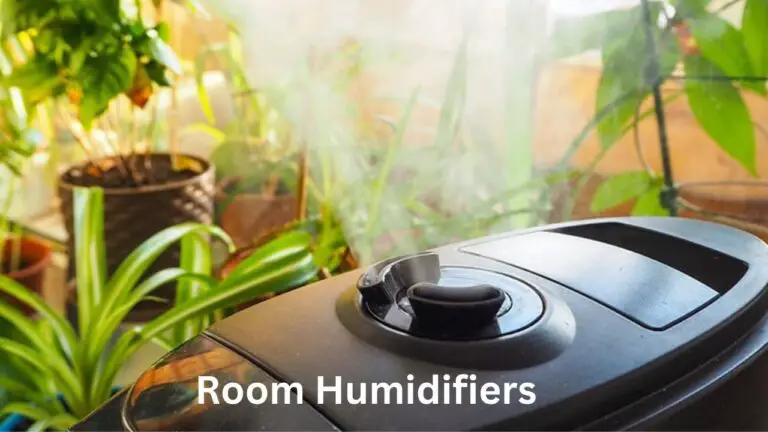

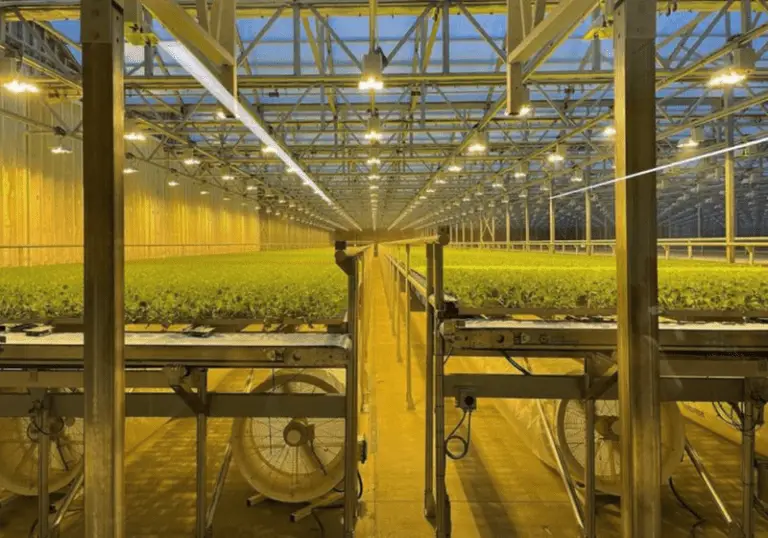
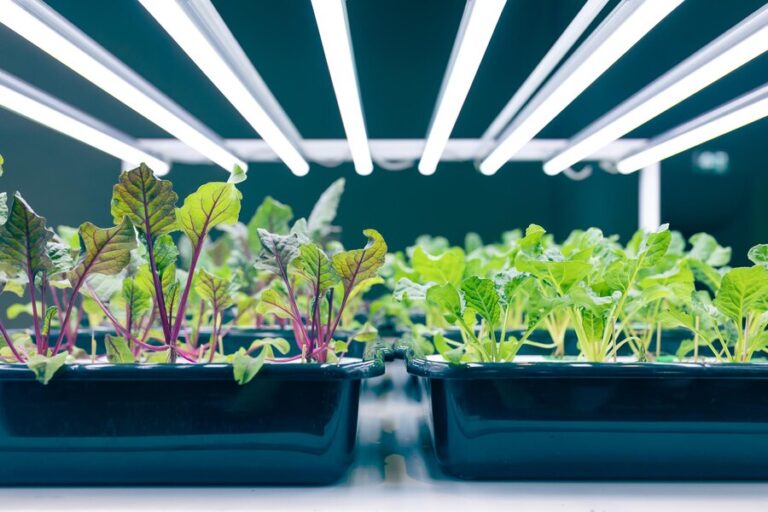

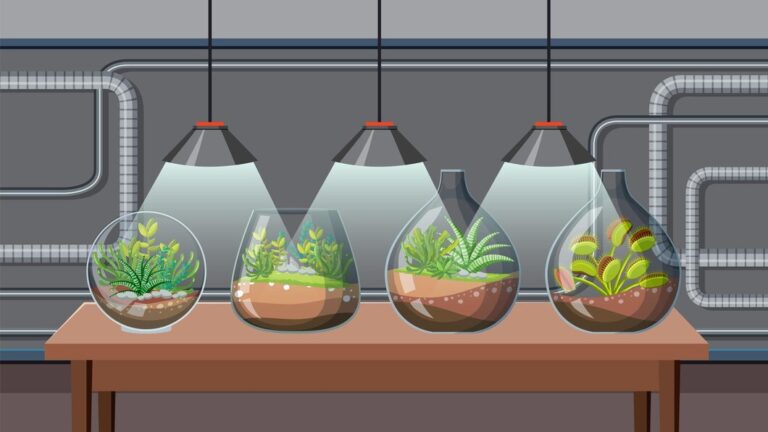
One Comment